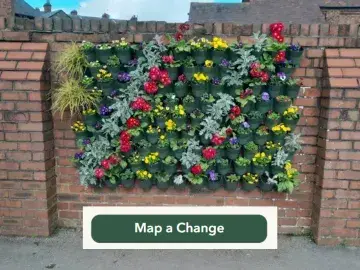
Mapping microhabitats
Mapping microhabitats - homes and help for nature - is part of the Mapping your site activities, enabling you to explore and map the habitats your site currently offers for nature. Understanding your starting point is really important and will allow you to measure any nature gains you achieve when you start making enhancements to your site. Mapping the microhabitats on your site is one of eight habitat mapping sessions in this unit of learning.
You can carry out this activity at any time of year.
Getting to know your space
Preparation
Green skills
- identification and ecology
- recording data
- environmental stewardship and horticulture
What you need
- Microhabitats worksheet - Homes and help for nature ticksheet
- a tablet, laptop, or desktop PC to access the online Habitat Mapper tool
- a printed map of your site, if you do not intend to use the Habitat Mapper outdoors
Location
Outdoors
Useful guidance
Step by step
- Learners can work independently or in small groups. Give each a copy of the Microhabitats Worksheet - Homes and Help for Nature ticksheet.
- Either: Set a timer (e.g. for five minutes) and ask learners to search a particular area of your site for the pictured items and tick the ones they find.
- Or: Ask learners to stay by a microhabitat when they find one and put their hand up.
- Move round to each in turn. On the Habitat Mapper tool, or a printed map of your site, educators and learners work together to mark these microhabitats with a dot/point on the map.
- Move round your site, if needed, and repeat this process until you have covered all areas.
- If you used a printed map, transfer each microhabitat point on to the online Nature Park map using the Habitat Mapper tool back in the classroom. This is a really important step to ensure your site and your observations are part of national community science research.
- Bring the group together and discuss how each item on your map might support nature – is it a long term home, a resource for breeding, a source of food or temporary shelter? What kinds of animals might use it?
- Return to the Mapping your site page and select the next habitat category you have on site.
Reflection
Discuss with learners how many of the different homes and help for nature items were found. Did you only have one of each, or multiple? Ask learners if they noticed any items that were not on the ticksheet and discuss how these may help nature. Are there opportunities to add more or different kinds of homes and help for nature on your site? Encourage learners to share their observations and ideas during this discussion.
What to try next
Add other habitats to your Nature Park map

Habitats: Mapping flowers and food
Begin activity
Mapping water habitats
Begin activity